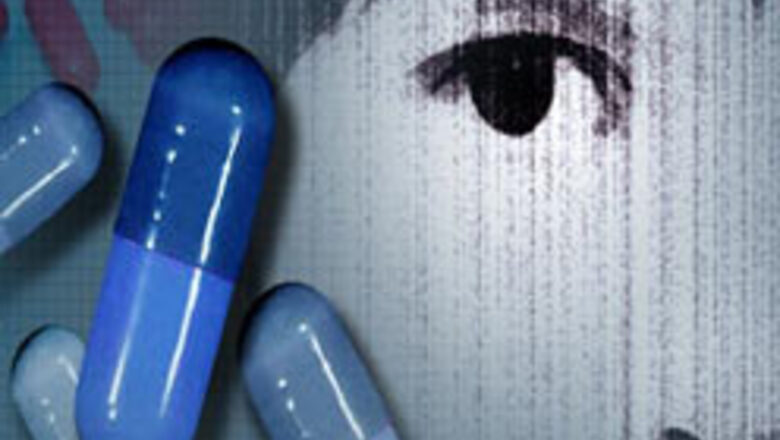
views
Bangalore: An Indo-American team studying the brain of genetically engineered mice has found out why some people under treatment for depression are driven to commit suicide.
All antidepressant medications sold in the US are required to carry a warning that use of these drugs "increased the risk of suicidal thinking and behaviour." The US Food and Drug Administration (FDA) made this warning mandatory two years ago on the basis of short-term clinical studies in children and adolescents.
Now, for the first time, research led by Sumantra (Shona) Chattarji of the National Centre for Biological Sciences (NCBS) in Bangalore has provided a molecular basis for this connection between treatment for depression and suicidal thoughts.
In their report published in the prestigious Proceedings of the US National Academy of Sciences they claim to have identified a "chameleon" like molecule in the brain that plays contrasting roles depending on which area of the brain it is present.
The researchers found that the molecule, called brain-derived neurotrophic factor (BDNF), lowers depression when present in "hippocampus," a part of the brain located inside the temporal lobe.
But the same molecule increased the anxiety levels when present in another region called "amygdala", an almond-shaped structure near the hippocampus.
The discovery of opposing roles for the same molecule in two different parts of the brain took the researchers by surprise.
"Ours is also the first finding, at the cellular level, to show that low depression and high anxiety can coexist in the brain," Chattarji, who is an international fellow of the Wellcome Trust, said.
The team observed this "paradoxical co-existence" while studying the effect of chronic stress on the two regions (hippocampus and amygdala) of the brain in transgenic mice that had been genetically engineered to overproduce BDNF.
Scientists know for decades that chronic stress that leads to depression damages the hippocampus and shrinks its size. "Most research on the cognitive effects of chronic stress till now had focused on hippocampus," Chattarji said.
"We wanted to depart from this traditional approach and see what chronic stress does to the neurons in amygdala which is the centre of emotions."
The researchers found that, in the chronically stressed transgenic mice, BDNF acted as an antidepressant and prevented damage to the hippocampus as expected.
PAGE_BREAK
However, over expression of BDNF in amygdala increased the anxiety level in the mice to such an extent that "they spent most time in the dark afraid to come into the open," Chattarji said.
Brain autopsy showed that amygdala of these stressed animals had actually grown bigger with more neuronal connections indicating heightened emotional activity and anxiety level.
According to Chattarji, the transgenic mice study has clearly shown that anti-depressants, while treating depressive symptoms can increase anxiety-like symptoms.
"In the case of humans what this means is that medications which help patients to overcome depression can raise their anxiety symptoms to levels that can drive some of them to commit suicide," he said.
For the same reason, Chattarji has a word of caution against the use of same drugs in the treatment of both depression and anxiety.
"Our data indicate that BDNF plays different roles in depression and anxiety," he said.
"Unless anti-depressants have a differential effect in the hippocampus and amygdala, they would not be expected to be effective anxiolytic (anxiety reducing) drugs."
According to Chattarji, the finding is of "enormous clinical significance" for managing stress-related disorders as it provides a benchmark for developing new drugs for treating depression without firing up the "anxiety neurons" in amygdala.
"Depression and anxiety are like twin brothers with a difference," Chattarji said. "What we are telling the drug developers is that if they want to treat depression with a drug, they must study its action not only in hippocampus - but also in amygdala which is the centre of emotions and the hub of anxiety."
Chattarji's team included Arvind Govindarajan, Mimi Trinh, Nadya Mawjee and Susumu Tonegawa of the Massachusetts Institute of Technology in the US and BS Shankaranarayana Rao and Deepti Nair of the National Institute for Mental Health and Neurosciences (NIMHANS) in Bangalore.


















Comments
0 comment